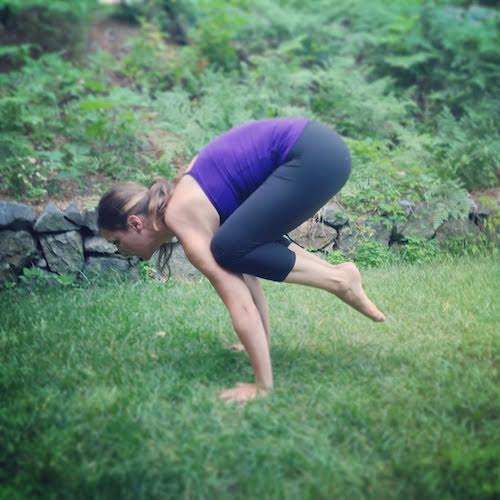
I hated arm balances.
Hated.
I know: you’re not supposed to be attached to any pose or have any judgement and all that stuff, but I did. I absolutely hated arm balances. I could not do them, and I came up with every excuse for why. My shoulders are way too floppy. My balance is terrible on my feet, so there is no way I can balance on my hands. My arse is too heavy.
I’m just not strong enough.
So, I had decided, quite declaratively, that since arm balances clearly were not for me, I would not bother even trying them any more. It was humiliating.
Again, I know the “rules” of Yoga tell us we should not approach the practice in such a way. I wasn’t supposed to let my ego tell me I was humiliated or, more accurately, angry that I could not balance on my hands. This anger was exacerbated when some newbie would come into class and float into bakasana the first time trying—and then laugh in amazement that they were able to balance only on their hands.
Disgusted. I think that’s the word I”ll use to describe how that made me feel. I’m not sure if it was with the new person or with my self.
Either way the feeling was palpable.
At its peak, I would start to think about whether a class would be filled with arm balances on my way to class. I thought my inability to lift my feet off the ground said something about my practice. “She can’t even do bakasana!,” they would think to themselves.
I had no idea at that point in my practice that the people who are in an arm balance—or whatever peak pose—have no inclination to look around the room and size people up.
Still, back then, the sense of perceived failure would last throughout the class and into the evening.
Then something happened. Instead of faking out my effort, I actually began to work the actions in the pose without regard for whether or not my feet would lift, or, as I had heard it described, “float.” I had already come to terms with being earthbound, so I may as well try to get some benefit out of the pose rather than just stewing in my own anger, disappointment, disgust, frustration.
It happened something like, ‘take the action, let go of the result.”
The moment I let go of my feelings of success or failure about bakasana, I was able to work more intelligently and figure out the geometry of it. To be clear, letting go is far different than giving up. For me, it turned out my hands were too close together.
All it took was separating them another half an inch, and I was up—not floating but balancing. So it had nothing to do with my shoulders, balance, strength or even my butt. It was just about figuring out how to stack my bones most effectively—and for many of us that can take time.
Since the action of lifting both feet together in bakasana is the blueprint for taking flight in almost all arm balances, as soon as I was able to figure that pose out, it cascaded throughout my practice quite quickly. It’s all the same actions, just different placement of the limbs.
Whether it’s this family of poses or another, if we keep our minds steady and perform actions, the results will come in time.
The Bhagavad Gita says that we should never let the fruits of our actions be our goal—sort of like that old adage, it’s the journey not the destination. This advice is easy to give but very hard to follow. I still have poses that elicit something like anger, but, if we can notice when that happens we can remind ourselves that “work alone is our privilege, never the fruits thereof.”
Love elephant and want to go steady?
Sign up for our (curated) daily and weekly newsletters!
Editor: Renée Picard
Photo: Author’s Own










Read 0 comments and reply